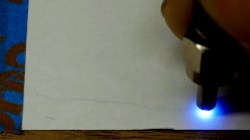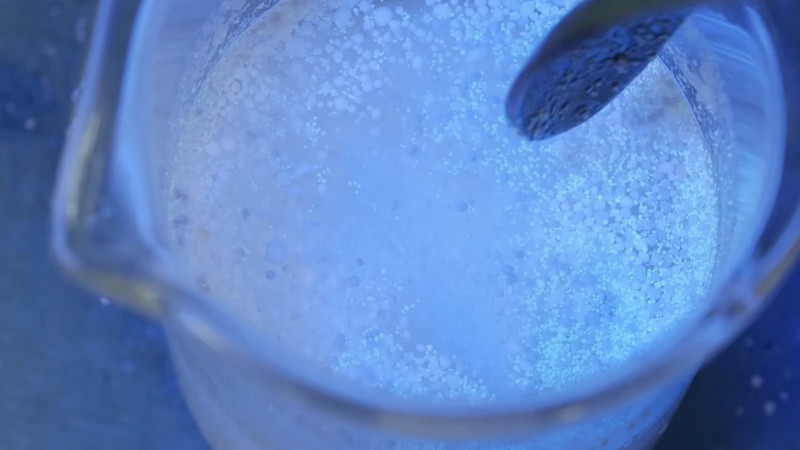Many a budding maker has experimented with invisible inks, with a wide variety of solutions having a viable set of properties for this purpose. However, [Ben Krasnow] stumbled upon a different method entirely when tinkering with a UV laser.

The laser in question was a MNL100 UV laser, configured to produce nanosecond-scale 20 kW pulses at up to 24 Hz, operating at wavelength of 337 nm, deep in the ultraviolet. After piping the laser light through an optical fiber and aiming it at some regular white paper, dark marks were observed, which disappear without a trace over the course of a few minutes.
Upon investigation, the dark marks seemed to be the result of fluorescent whitening agents in the paper. It appears they are overloaded or otherwise changed chemically by the laser, and slowly return back to normal over time. Further experiments showed that hydrogen peroxide was able to remove the marks instantly, and an argon atmosphere slowed the rate at which the marks faded.
It’s an interesting look at an odd chemical effect, with the benefit of a well-equipped optics lab to analyse what’s going on. Following the phenomenon down the rabbit hole leads to some tips on how to extract fluorescent additives from common laundry detergent. Be it paper, plastic, or textile, if it looks really bright white to your eye it probably contains stilbene organic compounds as optical brighteners, a hidden trait you never actually thought about before. Video after the break.















When I was working with kilowatt-level ultraviolet lasers (in my case, ArF and frequency-doubled Nd-YAG) it was my observation that almost everything organic fluoresces if you hit it hard enough. This includes your own skin.
You mean vaporizes into a plasma? ;)
You say tomato, I say hot ionized gas.
Ben is the best! My favorite Youtube channel by far.
I can see retailers using ultraviolet lasers to print receipts, the customer looks at the receipt and thinks “OK, looks good.” Then goes home, the product fails and he goes back to the store and says “I want my money back!” and the employee says “Yes Sir, just show me your receipt.” :)
Thermal paper already does this, though it takes about a year
When experimenting with engraving paper with a laser in the near UV spectrum, I accidentally made images on the paper that are basically invisible to the naked eye and are very visible under UV light. Though, instead of fluorescing, the “engraving” becomes darker. If done on light color paper, its basically impossible to see the engraving, if the paper is darker, it can be seen if you look really closely. From my experiments, it worked on basically every paper i tried.
So you invented an “invisible” laser printer?
Been a long while since I took my Paper Engineering class or two, but US bright white paper has a “brightness” of ~110%. Paper brightness is measured with the amount of blue light coming off the paper, and thanks to some fancy additives UV light will change to low blue light upon reflection.
This is by US TAPPI standards, which is slightly different from the European standards organization. The European stuff never measures above 100% because they measure specific light wavelength in, specific light wavelength out.
(Apologies for any mistakes, corrections welcome. This was two classes I took in one semester about 10 years ago.)
I think what you mean is CIE “whiteness” – values above 100% are common, because parts of the UV light are being reflected back into visible range (wavelengths change), which makes the measured “light out” more than the measured “light in” (because you only measure visible light, not the UV area).
You can, instead, use ISO 2469, which doesn’t use “color” but simply looks at diffuse reflectence angles – but that’s not very common, CIE is “easier on the eye”, forgive the pun.
They use CIE in Europe quite as well …
Thank you for the clarifications!
It’s been too long, so I don’t remember the details.